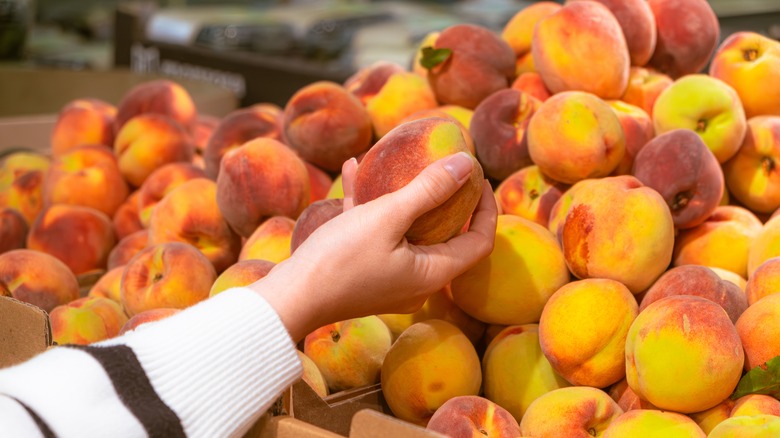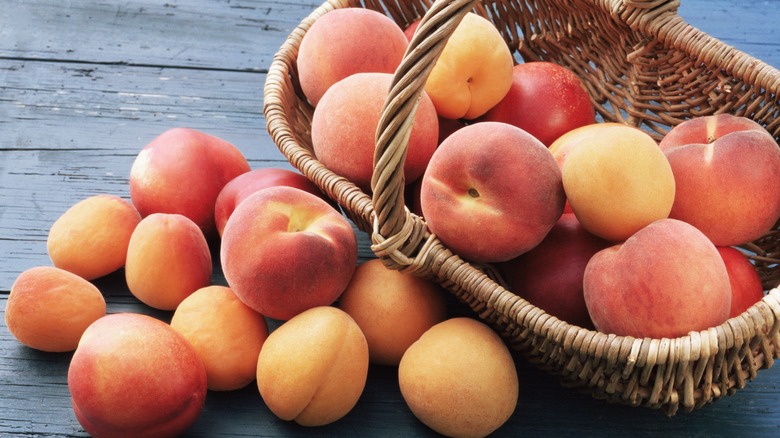The Color To Look For If You Want The Ripest Peach Possible
A ripe, juicy peach is the perfect summer fruit to complement a hot day. Its refreshing, sweet flavor is a reminder that while the summer brings intense heat, it also brings a bounty of seasonal fruit. From a warm, old-fashioned peach cobbler to a rich slathering of peach jam, peach season is great for everything from baking to breakfast, though these pink-hued stone fruits need no accompaniment to shine. Those lucky enough to have access to a peach tree themselves know just how delicious a ripened peach fresh from the branch can be.
However, obtaining that perfect level of ambrosial ripeness is difficult to find. Picking or buying a peach too early can test your patience and leave you wanting. Too late, and the mushy texture and browning color make for a less-than-optimal peach-eating experience. Despite the apparent difficulty in obtaining perfect ripeness, hope is not lost. The key to finding a ripe peach comes down to whether or not it has a brown stem.
Why you should seek out peaches with brown stems
Not-quite-ripe peaches will have a green ring around the base of their stem. When the green-hued ring begins to disappear and brown, it's an indication that the peach has ripened further, signaling that it's ready to be enjoyed immediately. This method doesn't just work for peaches, however, but other stone fruits as well. It's a technique best used for picking peaches from the market, rather than your backyard, as peaches that ripen on the tree sometimes develop brown rot and are often snatched up by hungry critters.
The brown stem method is more consistent than many other techniques for checking peach ripeness. Because of the myriad of peach types (many of them used in different ways), testing a peach for firmness can be deceptive, as some newer varieties of peach are designed to maintain their crunchiness even when ripe. Checking color can also be tricky as a peach's hue doesn't change evenly, with the part exposed to the sun (called the blush) reddening faster than the rest. Even after applying these tests, if your peaches are still not ripe enough for your liking, there are ways to help speed up the process.
Tips for ripening immature peaches
Sometimes, despite your best efforts to pick a ripe peach, underripe, green-stemmed peaches are the only ones available. The key to this problem lies with ethylene gas, a hormone that signals the fruit to ripen once it's matured. Similar to ripening other fruits quickly, like tomatoes, a great hack for peaches involves placing them in a closed paper bag to help trap ethylene, speeding up the ripening rate. Adding fruits that produce a lot of ethylene to the bag, like bananas, will accelerate the ripening process even further.
A brown paper bag isn't the only method to help ripen peaches; wrapping peaches in linen towels also helps to trap ethylene, thus furthering peach ripeness. Additionally, placing peaches in direct sunlight aids the ripening cycle. However, be wary when using this sunlight method, as the resulting ripening comes mainly from the sun's heat rather than the rays themselves. Leaving it in the sun for too long could overheat the fruit and damage it. While these methods help with ripening, your best bet is to search for brown stems. Summer only lasts for so long, so why not enjoy the ripest peaches you can while they're still in season?


